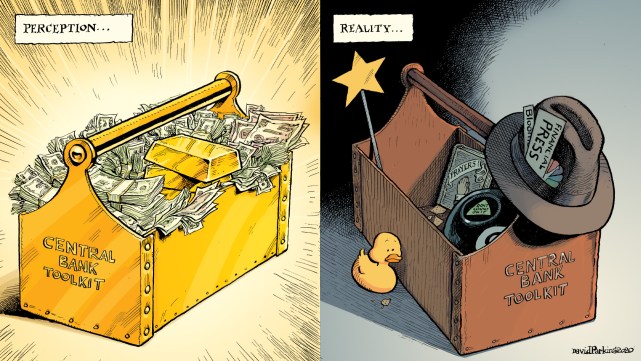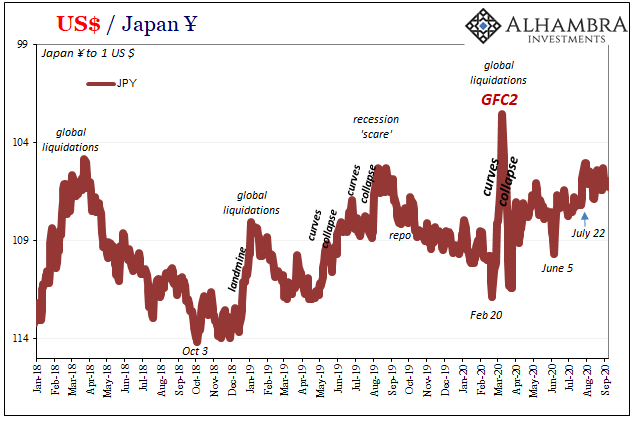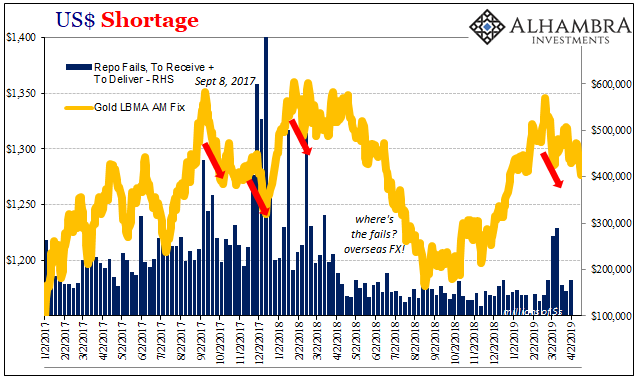 The official talk around the G7 statement and the G20 meeting generated a great deal of needless noise in the foreign exchange room. It is almost like a librarian yelling “Quiet”. It may be more disruptive than the initial noise.
The official talk around the G7 statement and the G20 meeting generated a great deal of needless noise in the foreign exchange room. It is almost like a librarian yelling “Quiet”. It may be more disruptive than the initial noise.
With the meetings out of the way, we expect the official jawboning about the currency market to die down. Of course, there is a chronic low level murmur of economic commentary that may have broad implications for foreign exchange rates.
Over the course of the past week, the currencies we analyze here, with the exception of the small gain (0.25%) by the Mexican peso, all fell against the US dollar. The Dollar Index (DXY) itself closed above the downtrend drawn of the mid-November highs. The strong close before the weekend drew it near the retracement objective in the 80.70-80 area. The next target would be 81.35 and 82.00.
From a technical point of view it makes sense to put the currencies here in three buckets, the euro, yen and the others. The euro had remained strong even as the yen and the other currencies fell. It has been trending lower since the start of the month. We had thought the $1.3400 area would generally hold, but it has not. Moreover, it appears additional near-term losses are likely.
The 5-day moving average has crossed below the 20-day moving average. The similar trendline that the Dollar Index closed above comes in near $1.3280 in the euro and rises to $1.3320 be the end of the week. A convincing violation suggests scope for addition 1-2 cent decline. On the other hand, the trend line drawn off the early Jan high is near $1.3440 on Monday and falls toward $1.3350 by the end of the week. A move above this trend line will help stabilize the technical tone.
We have argued that the driver for the euro-dollar exchange rate is short-term interest rate differentials. German short-term interest rates have been more volatile than the US and the German 2-year yield has been the key. The Germany two-year yield rose above 30 bp last month and has slipped back below 20 bp. However, it appears to be building a base above 15 bp and we expected caution ahead of the end of next week when European banks can begin paying back funds from LTRO II.
For the better part of two weeks now the dollar largely confined to a JPY92.20 and JPY94.00 range. It successfully tested the lower end of the range before the weekend. As it became clear that the G20 were not going to single Japan out or chastise it, the dollar recovered. It should now test the upper end of the trading range. We are a bit wary of a potential reversal there.
As hubris often proceeds a lesson in humility, so too when the Wall Street Journal writes of how much money some large hedge funds are making in the short-yen trade and the talking heads on business television discuss how everybody knows to short the yen, one must worry that the gig is up–like going to a New Year’s Party after midnight. On the dollar’s downside, we note that the greenback has not closed below its 20-day moving average since the Japanese election was called on November 15. It is now near JPY91.95, just below the lower end of the trading range.
The other currencies, especially the Australian and Canadian dollars and the British pound have been trending lower in the first half of the first quarter. In fact, these are the three weakest of the major currencies, after the Japanese yen.
Last week we suggested that a long Australian dollar against the Canadian dollar looked interesting from a technical point of view. The Aussie did make higher highs against the CAD every day last week and eight day highs were set before the weekend, but the problem with the trade is it is between two weak currencies, rather than between a strong and weak currency.
Both currencies look poised to continue to weaken near-term. The Aussie closed poorly before the weekend and a break of $1.0280 could signal the start of quick losses toward $1.02. The US dollar closed firmly before the weekend against the Canadian dollar. The next target is CAD1.01 and a move above CAD1.0130 signal a near-term test on CAD1.02.
Sterling is perhaps the most interesting among the dogs. It has been pummeled. It has lost 4.5% against the dollar thus far this year and almost 6% against euro. With the government committed to austerity and the current leadership at the central bank seemingly reluctant to provide more monetary stimulus the economy remains in its trough. BOE Governor King talked sterling down in perhaps a somewhat more deftness than Japanese officials, but talk it down he did. The bad news stream of the week finished with a dismal January retail sales report. Sterling made a new low for the move, but then recovered. This was the first sign of life in several weeks.
Patience is needed. Given the magnitude of its headlong plunge, a short-lived technical bounce, if nothing else is possible. The first test comes near $1.5575. A move above $1.5650 would indicate a deeper retracement should be expected.
Lastly, turning to the Commitment of Traders report, we share the following observations:
1. In the CFTC reporting week through Feb 12, the gross long positions of all the currency futures we analyze were cut except for the Japanese yen. Four of the six fell by more than 10k contracts.
2. The short positions were little changed with a small bias (4 of 7) toward paring them. No gross short position was adjusted by more than 5k contracts.
3. For the first time since the middle of last September the net sterling position in now short.
4. The net long Australian and Canadian dollar positions have fallen for 3 and 4 weeks respectively. The net long Aussie position is the smallest since November, The net long Canadian dollar position is the smallest since August.
| week ending Feb 12 |
Commitment of Traders |
|
|
(spec position in 000’s of contracts) |
|
|
Net |
Prior |
Gross Long |
Change (GL) |
Gross Short |
Change (GS) |
| Euro |
24.2 |
38.1 |
87.1 |
-10.3 |
63.0 |
3.5 |
| Yen |
-61.3 |
-68.4 |
55.8 |
5.1 |
117.1 |
-2.0 |
| Sterling |
-16.8 |
1.2 |
38.7 |
-13.3 |
55.4 |
4.7 |
| Swiss Franc |
4.6 |
3.9 |
12.1 |
-1.0 |
7.6 |
-1.7 |
| C$ |
26.6 |
27.8 |
39.3 |
-5.2 |
12.8 |
-4.0 |
| A$ |
54.1 |
80.9 |
99.8 |
-22.9 |
45.6 |
4.0 |
| Mexican Peso |
125.0 |
142.0 |
131.6 |
-18.9 |
7.0 |
-2.0 |
Submitted by Mark Chandler, from marctomarkets.com
Are you the author?
He has been covering the global capital markets in one fashion or another for more than 30 years, working at economic consulting firms and global investment banks. After 14 years as the global head of currency strategy for Brown Brothers Harriman, Chandler joined Bannockburn Global Forex, as a managing partner and chief markets strategist as of October 1, 2018.
Previous post
See more for 4.) Marc to Market
Next post
Tags:
Canadian Dollar,
Commitments of Traders,
COT,
Currency Positioning,
FX Positioning,
Japanese yen,
Marc Chandler,
MXP,
Net Position,
Non-Farm,
Peso,
Speculative Positions
 The official talk around the G7 statement and the G20 meeting generated a great deal of needless noise in the foreign exchange room. It is almost like a librarian yelling “Quiet”. It may be more disruptive than the initial noise.
The official talk around the G7 statement and the G20 meeting generated a great deal of needless noise in the foreign exchange room. It is almost like a librarian yelling “Quiet”. It may be more disruptive than the initial noise.

































